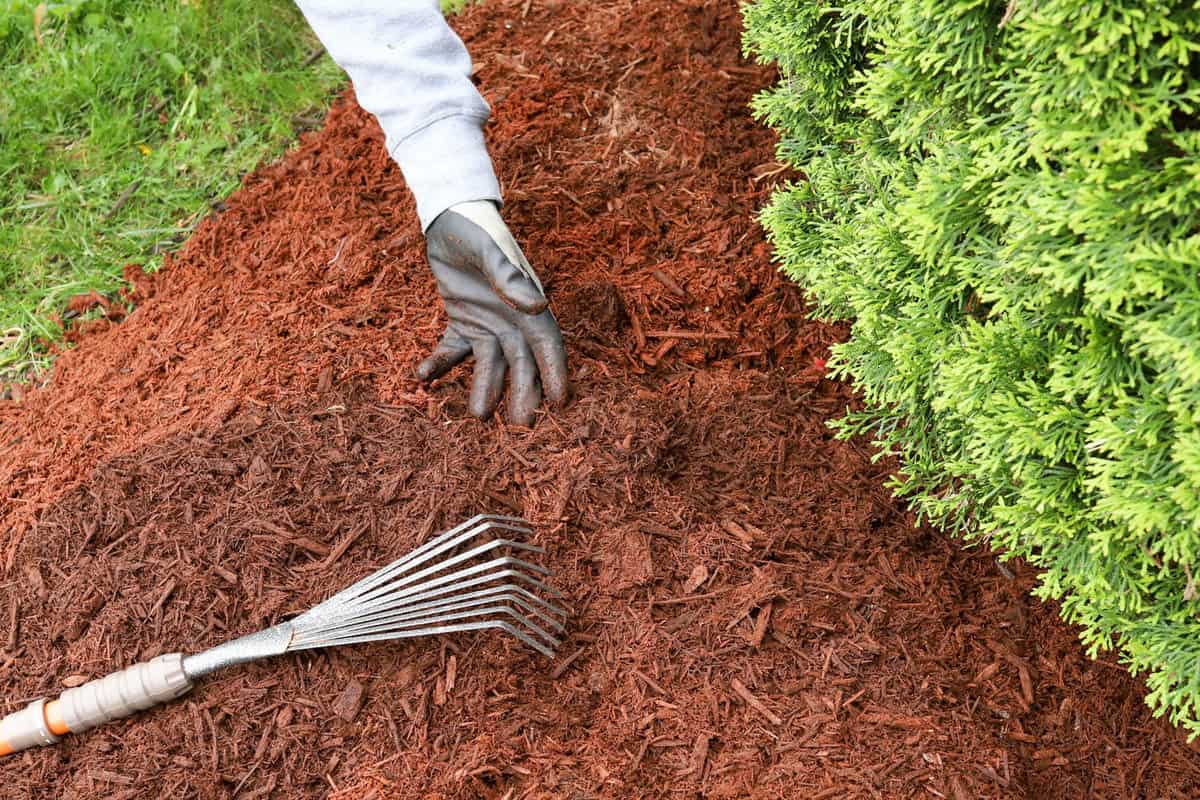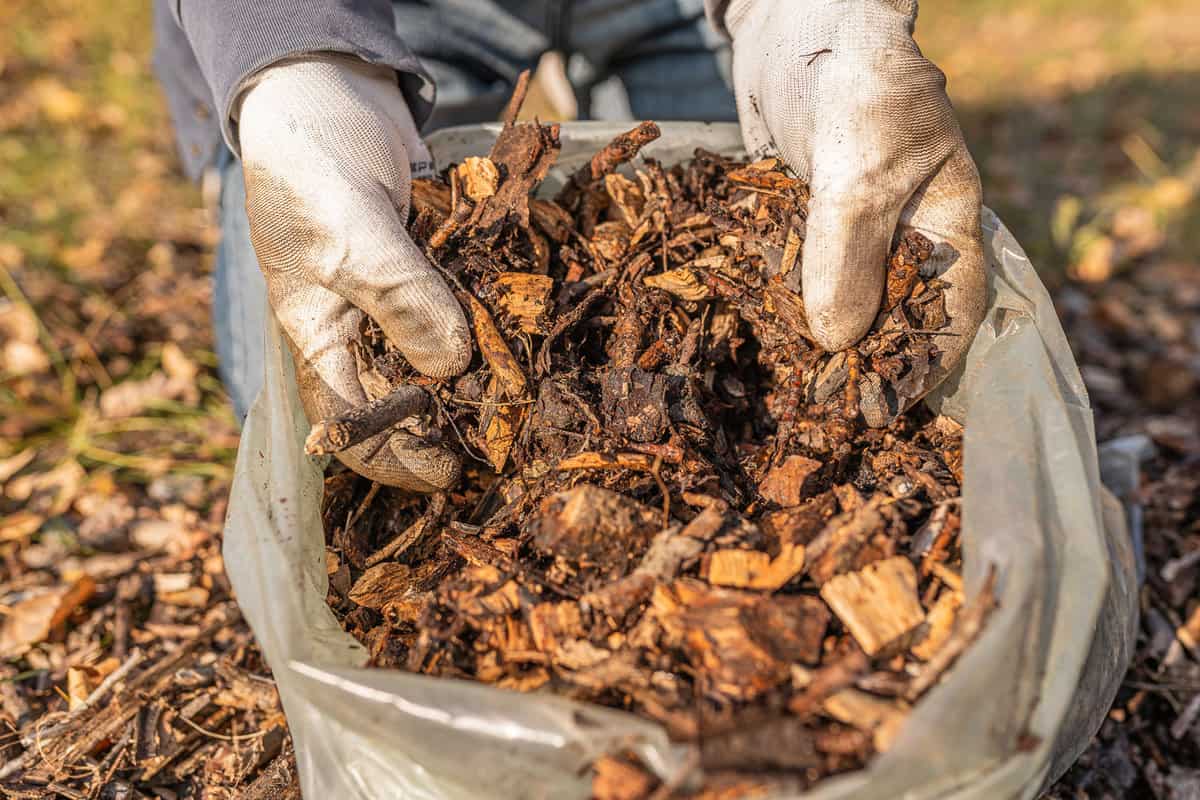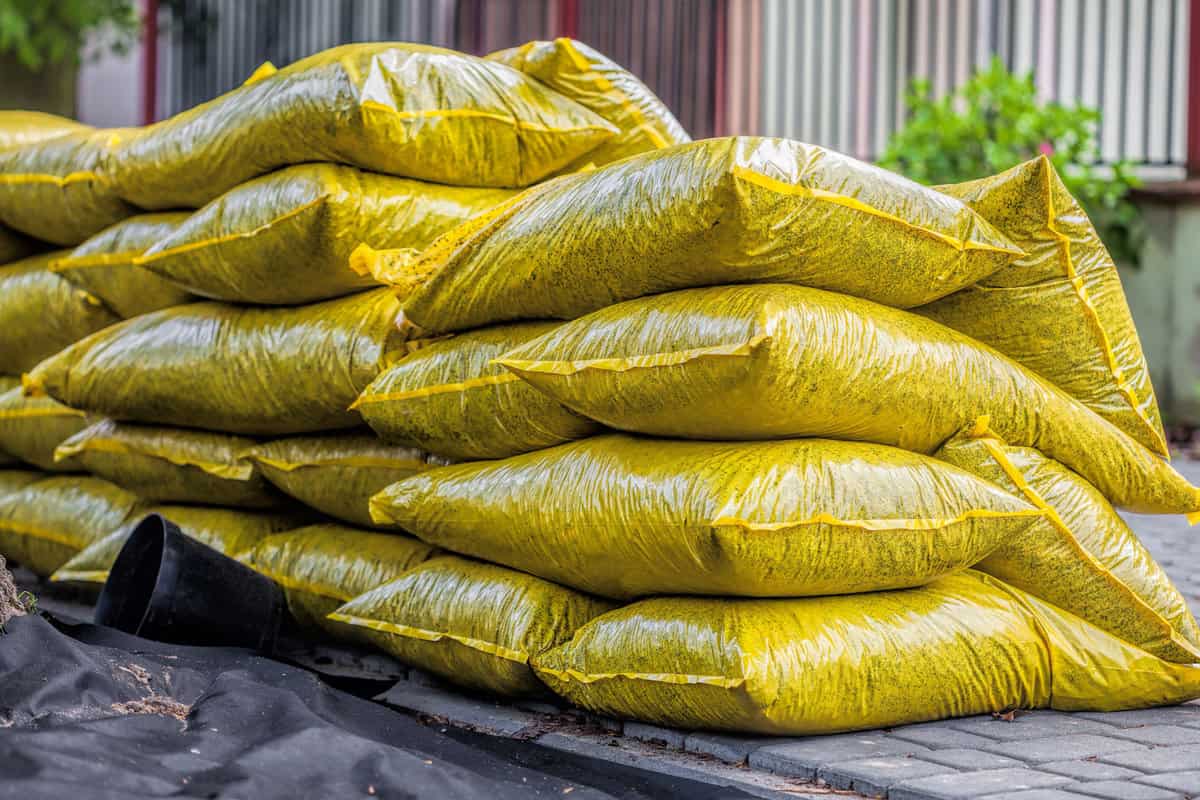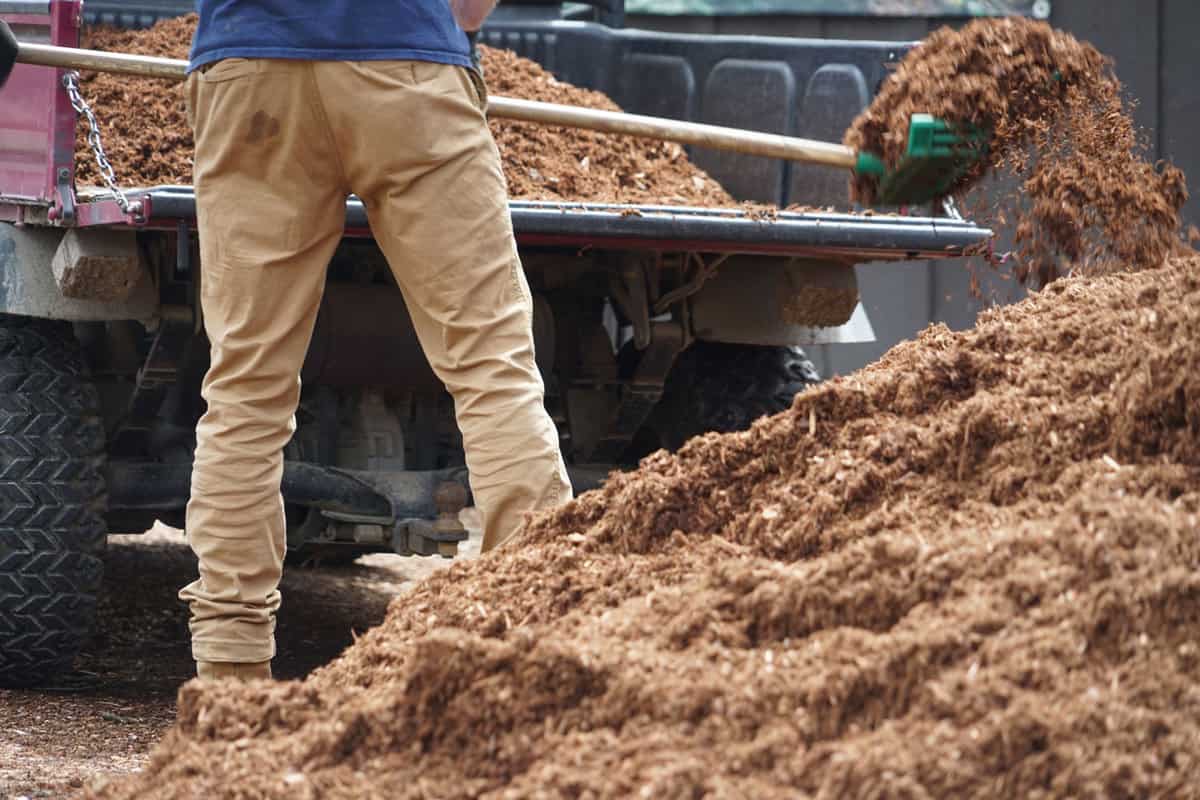If you are interested in knowing the mathematics of bulk mulch, you have come to the right place. We have researched this subject to satisfy your curiosity, particularly on the number of cubic feet in a yard of mulch.
A yard of mulch has a volume of 27 cubic feet (cu. ft.). However, you can easily calculate how much mulch you have by multiplying the area of your garden bed that has been mulched by the thickness that you put throughout in feet.
In this article, we'll delve deeper into mulch calculation to make it easier for you to find the appropriate amounts of mulch when buying. We'll talk precisely about the amount of mulch in a yard, the number of bags it holds, the price, and more. So continue reading.
How Much Mulch Is In A Yard?

Mulch is made of organic materials that have decomposed and are used to protect vegetation and crops from the elements. If you have a garden in your backyard, you'll quickly find yourself knee-deep in mulch. Because of this, many people are confused about what exactly a cubic yard is.
A cubic yard (cu. yd.) is a unit of volume, often known as a “yard”. It is visually as 3 ft. in all dimensions (length, width, and depth). Accordingly, the formula for 1 yd. is:
- 3 ft. x 3 ft. x 3 ft. = 27 cu. ft.
A cubic foot is a volume measurement too that visibly measures 1 ft. in all dimensions. And so, the formula for 1 cu. ft. is:
- 1 ft. x 1 ft. x 1 ft. = 1 cu. ft.
Above are just the basic dimensions of a cubic yard. However, people typically apply their mulch at a thickness of 2 inches (in.) only and so it can cover an area of around 162 square feet (sq.ft.). If suggested at 3 in. depth then the area covered is 108 sq. ft. Then, 324 sq. ft. for 1 in. thick.
How Many Bags Of Mulch Are In A Yard?
Mulch is available in several bag sizes. Simply because mulch in bags makes it easier to handle, store, and transport the mulch to various landscaping locations. You can also easily split the bags open and sprinkle the mulch across your garden.
However, the most common size of mulch bag is 2 cu. ft. Recognizing that 27 cu. ft. makeup one yard of mulch. This only indicates a yard of mulch composed of 13.5 bags. For clearer formulation, check out below:
- 2 cu. ft. per bag: 27/2 = 13.5 bags
However, if mulch bags are 1, 1.5, 2.5, 3, 3.5, 4, etc. cu. ft. in size, then there will be the following number of bags:
- 1 cu. ft. per bag: 27/1 = 27 bags
- 1.5 cu. ft. per bag: 27/1.5 = 18 bags
- 2.5 cu. ft. per bag: 2 /2.5 = 10.8 bags
- 3 cu. ft. per bag: 27/3 = 9 bags
- 3.5 cu. ft. per bag: 27/3.5 = 7.7 bags
- 4 cu. ft. per bag: 27/4 = 6.75 bags
To summarize, in order to know the number of bags needed for a yard, you need first to know the size of the bag in cubic feet. Then, divide the result into 27 cu. ft. (1 yd).
How Much Does A Yard Of Mulch Weigh?
The mulch is a layer of material composed of various types of wood chips that are applied to the soil surface for your garden veggies and crops. Because of this, the weight of a yard of mulch varies.
Also, you need to consider that the mulch will weigh more if more moisture it has. To understand how much a bag of mulch weighs, you must get familiar with the many types of this covering:
Wood Mulch
The surface area of all organic wood mulches is essentially the same. The weight of a bag of mulch, however, varies depending on whether it is wet or dry.
Click here to see this wood mulch on Amazon.
The recommended installation thickness for wood mulch is between 2 and 4 in., and it comes in 2 cu. ft. bags. A bag of wood mulch usually weighs roughly 20 pounds (lb.), and so a cu. yd. weighs 270 lb.
Straw Mulch
These come in bags that are 2.5 cu. ft. in size. Straw mulch weighs around 50 lb. which can weigh 540 lb. per cu. yd., and covers an area of about 500 sq. ft.
Click here to see this straw mulch on Amazon.
Compost Mulch

This wonderful organic mulch is beneficial to your soil. It comes in bags that are either 1 or 2 cu. ft. in size and weighs 44 lb per cubic foot. So, it weighs 1,188 lb per cu. yd. or is rounded up to 1,200 lb. Keep in mind that the mulch cover is 1 in. thick.
How Much Mulch Do I Need?
Having too little or, worse, too much mulch stuck on your lawn due to inaccurate estimations may leave you scratching your head in confusion.
Below are some simple procedures to help you determine how much mulch you'll need for your garden and landscaping. All you'll need is a measuring tape along with your cell phone's calculator.
1. Select The Appropriate Sort Of Mulch
As mentioned above, mulch comes in a variety of forms. It's a wise choice to base your mulch selection on the local resources that are available to you and the plants that are growing there.
2. Calculate The Garden Area's Square Footage
It's time to decide the dimensions of your garden bed once you've decided which kind of mulch you're going to use.
- For rectangular area: Length(ft.) x Width(ft.) = sq. ft.
- For circular area: Radius(the distance from the bed's center to its edge) x Radius x 3.14 = sq. ft.
It's normally fine if your garden bed has an unusual shape, such as an oval. Just try to separate it into a succession of imagined circles and rectangles that are joined to form that shape. Then figure out how much square footage each of those parts has, and add it up.
If you want to mulch several sections in your yard, first calculate the square footage of each location separately, and then sum those figures to get the overall area you wish to mulch.
3. Determine The Depth Of The Mulch Layer You Desire
Determine the depth of your organic mulch layer once you know the entire square footage of your bed. It is advisable to have a 3 to 4 in mulch covering for tree and shrub gardens and 1 to 3 in flower and vegetable gardens.
Always remember that mulching much to the plants is not ever desirable because thick layers hinder oxygen passage to the root zone.
In the US, bagged mulch is marketed in bags that are cu. ft. in size, whereas truckloads of mulch are measured in cu. yd. For your convenience, we provided a mulch calculation below that works for both bagged and bulk mulch.
Bagged Mulch

If you're purchasing mulch in bags, take the following action to figure out how much you'll need:
1. Multiply the square footage of your garden bed by one of these depths values you may desire to get the amount of mulch needed in cu. ft.
- 1 in. = 0.083 ft.
- 1.5 in. = 0.125 ft.
- 2 in. = 0.167 ft.
- 2.5 in. = 0.208 ft.
- 3 in. = 0.25 ft.
- 3.5 in. = 0.292 ft.
For instance, you need to mulch a rectangular garden bed having a length of 20 ft. and a width of 15 ft. The following are cubic feet resulting from different thicknesses:
- 1 in. depth: 20 ft. x 15 ft. x 0.083 ft. = 24.9 cu. ft.
- 1.5 in. depth: 20 ft. x 15 ft. x 0.125 ft. = 37.5 cu. ft.
- 2 in. depth: 20 ft. x 15 ft. x 0.167 ft. = 49.2 cu. ft.
- 2.5 in. depth: 20 ft. x 15 ft. x 0.208 ft. = 62.4 cu. ft.
- 3 in. depth: 20 ft. x 15 ft. x 0.25 ft. = 75 cu. ft.
- 3.5 in. depth: 20 ft. x 15 ft. x 0.292 ft. = 87.6 cu. ft.
2. Divide the result by the size of the bag of mulch. Considering that most mulch bag has a capacity of 2 cu. ft., you will get the following bags (this is the same process with other sizes of mulch bag):
- 24.9 cu. ft. / 2 cu. ft. = 12.45 bags
- 37.5 cu. ft. / 2 cu. ft. = 18.75 bags
- 49.2 cu. ft. / 2 cu. ft. = 24.6 bags
- 62.4 cu. ft. / 2 cu. ft. = 31.2 bags
- 75 cu. ft. / 2 cu. ft. = 37.5 bags
- 87.6 cu. ft. / 2 cu. ft. = 43.8 bags
Bulk Mulch

If you're buying mulch by the truckload, the calculation you need is stated below to get the cu. yd. needed:
1. Multiply the garden area's square footage by the number of inches of mulch you want on top of it.
2. Divide that amount by 324 to get the mulch needed in cu. yd. Below are examples in 1 and 2 in. thick, assuming a 30 ft. long and 25 ft. wide rectangular garden bed:
- (30 ft. x 25 ft. x 1 in.) / 324 = 2.31 cu. yd.
- (30 ft. x 25 ft. x 2 in.) / 324 = 4.63 cu. yd.
How Much Is A Yard Of Mulch (Cost)?
![A garden rake in a pile of mulch, How Many Cubic Feet Is In A Yard Of Mulch [Quick & Easy Calculation]](https://gardentabs.com/wp-content/uploads/2023/01/A-garden-rake-in-a-pile-of-mulch-How-Many-Cubic-Feet-Is-In-A-Yard-Of-Mulch-Quick-amp-Easy-.png)
Purchasing mulch in bulk is preferable if you require more of it. A cubic yard of mulch ranges in price from $30 to $150 with some specific costs per yard below:
- Undyed pine mulch: $30
- Dyed mulch: $40
- Playground mulch: $50 and $60
- Cedar mulch: $100
The majority of landscaping companies sell by the bag if you only need a fraction of a cubic yard. Bagged mulch can cost around $3 to $7 per bag.
However, aside from the type of mulch, there are other factors that affect the cost of the mulch the most which will go through in greater detail below:
- Delivery: To transport the mulch to your home, the majority of mulch vendors impose a set delivery price. You could pay considerably more if your house is far from the provider. Delivery fees begin at $160.
- Quantity: Purchasing in bulk is the key to lowering the price of mulch. Mulch costs less per cubic yard when you buy a whole truckload of it. It is advisable to buy all the mulch you need at once rather than more bags of mulch each time you begin mulching a new area of your landscape.
Conclusion
Mulching is a wonderfully beneficial practice that will improve the appearance and health of your garden. Hope this article will serve as your handy reference in computing in regards to a yard of mulch. Since you now know a lot about it, don't waste any more time and start mulching!
Before leaving, read some other articles we have below.


